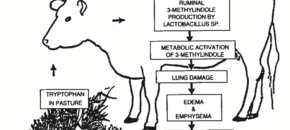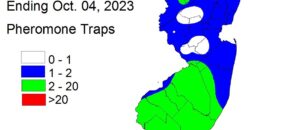
A metabolic syndrome that sometimes affects ruminants, particularly cows on lush fall pastures is Acute Bovine Pulmonary Emphysema (ABPE), sometimes referred to as “Fog Fever”. ABPE can occur in ruminants, especially cattle, transitioning from dry summer pastures or poor quality forage in the fall, to pastures that may be lush and fresh. Cows may develop […]
Continue reading...

